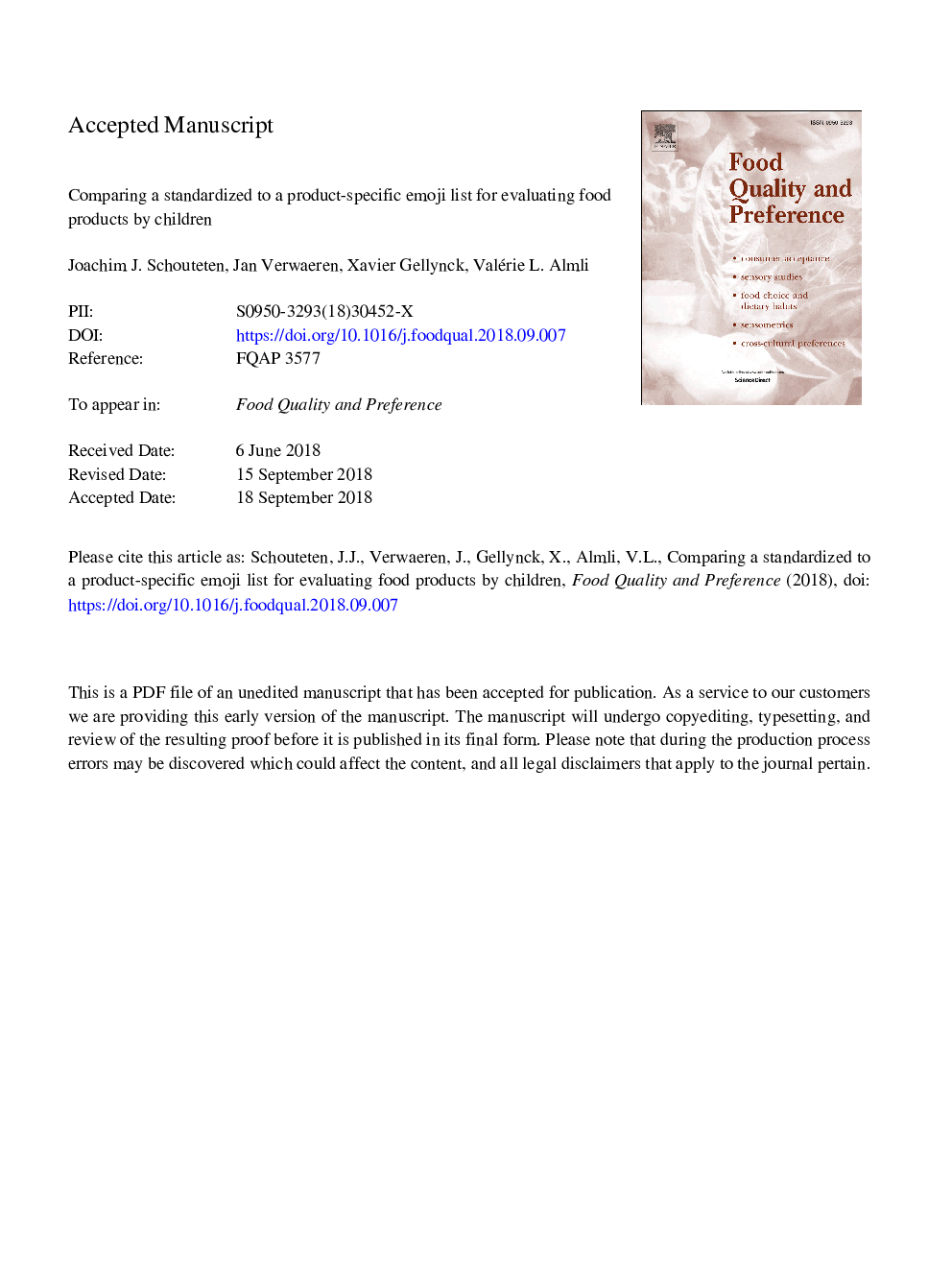| Article ID | Journal | Published Year | Pages | File Type |
|---|---|---|---|---|
| 11263510 | Food Quality and Preference | 2019 | 24 Pages |
Abstract
There is a growing interest in the emotional associations of children to food products in order to better understand their preferences. Recently, emoji were suggested as a novel way to assess these emotional associations. In this study, 172 children aged 8-11â¯years evaluated the emotional profile of five biscuits in a check-all-that-apply task, where half of the subjects (nâ¯=â¯87) evaluated the applicability of 38 emoji obtained from a standardized emoji list, while the other half (nâ¯=â¯85) worked with 20 emoji from a product-specific emoji list. A similar average number of emoji were used by the participants for the emotional profiling of the samples in both approaches. Results showed that the product-specific emoji list was better able to discriminate between product samples compared to the standardized emoji list. Several emoji were even discriminating between similarly liked samples when using a product-specific emoji list, while only one emoji was able to discriminate between equally-liked samples when using a standardized emoji list. Both approaches produced similar emotional spaces and product configurations, although one needs to consider that the first dimension of the correspondence analysis for the product-specific emoji list explained over 90% of the total variance against 60% for the standardized list. While more research is recommended, this study indicates that a product-specific emoji list could facilitate the emotional product discrimination by children.
Related Topics
Life Sciences
Agricultural and Biological Sciences
Food Science
Authors
Joachim J. Schouteten, Jan Verwaeren, Xavier Gellynck, Valérie L. Almli,
